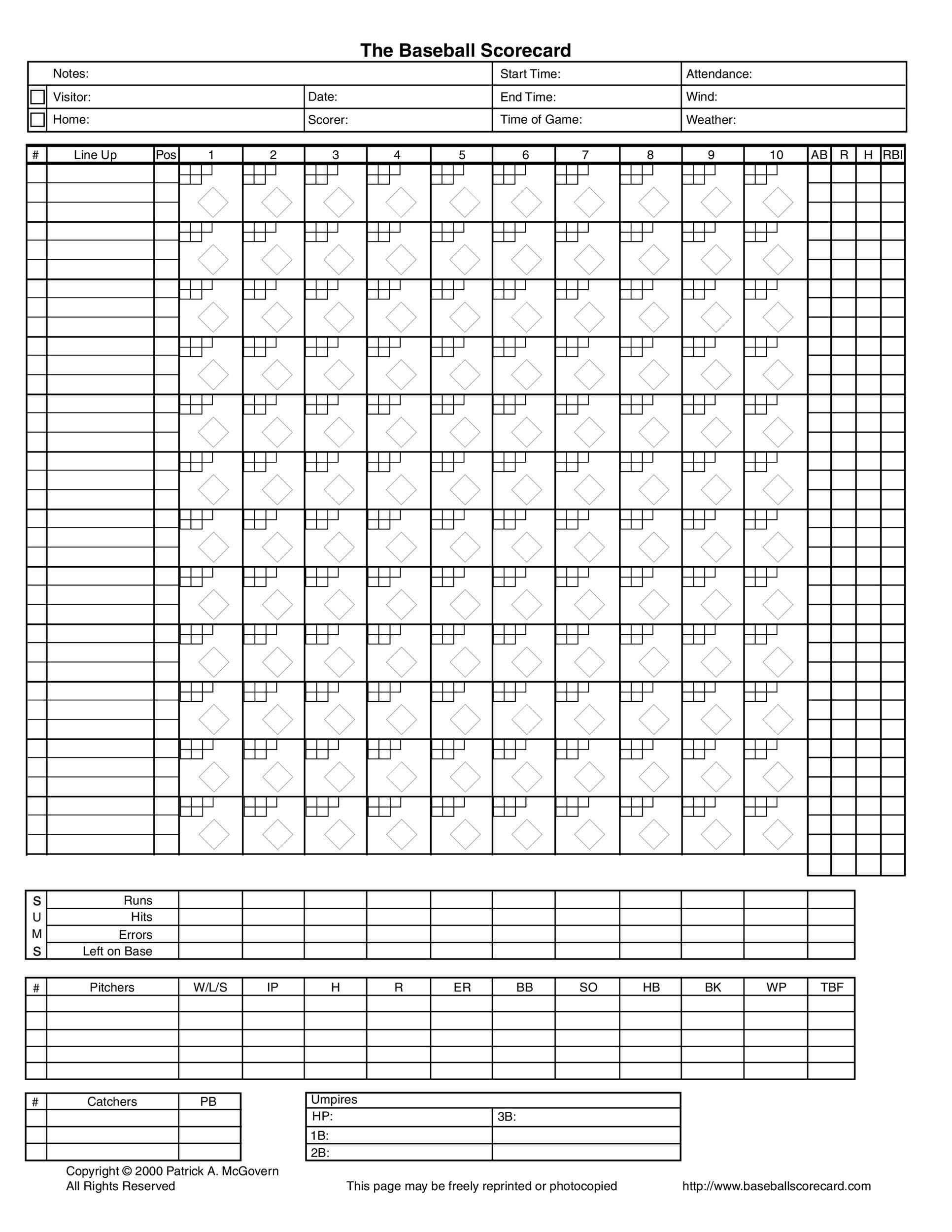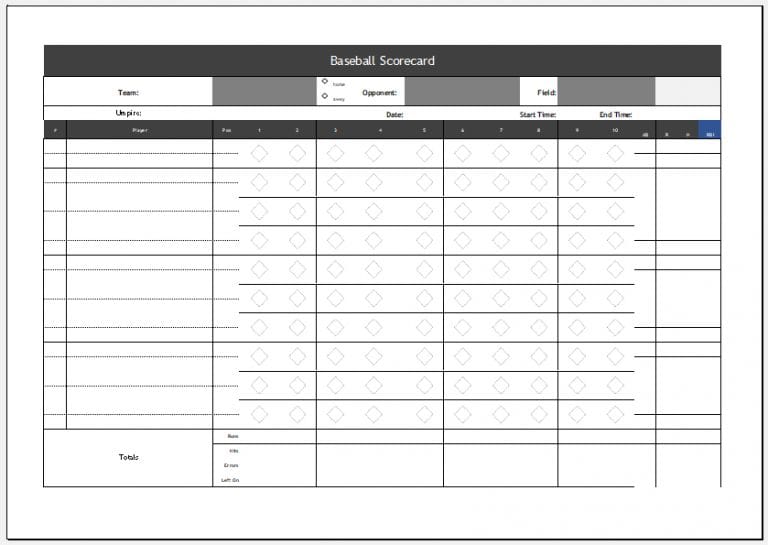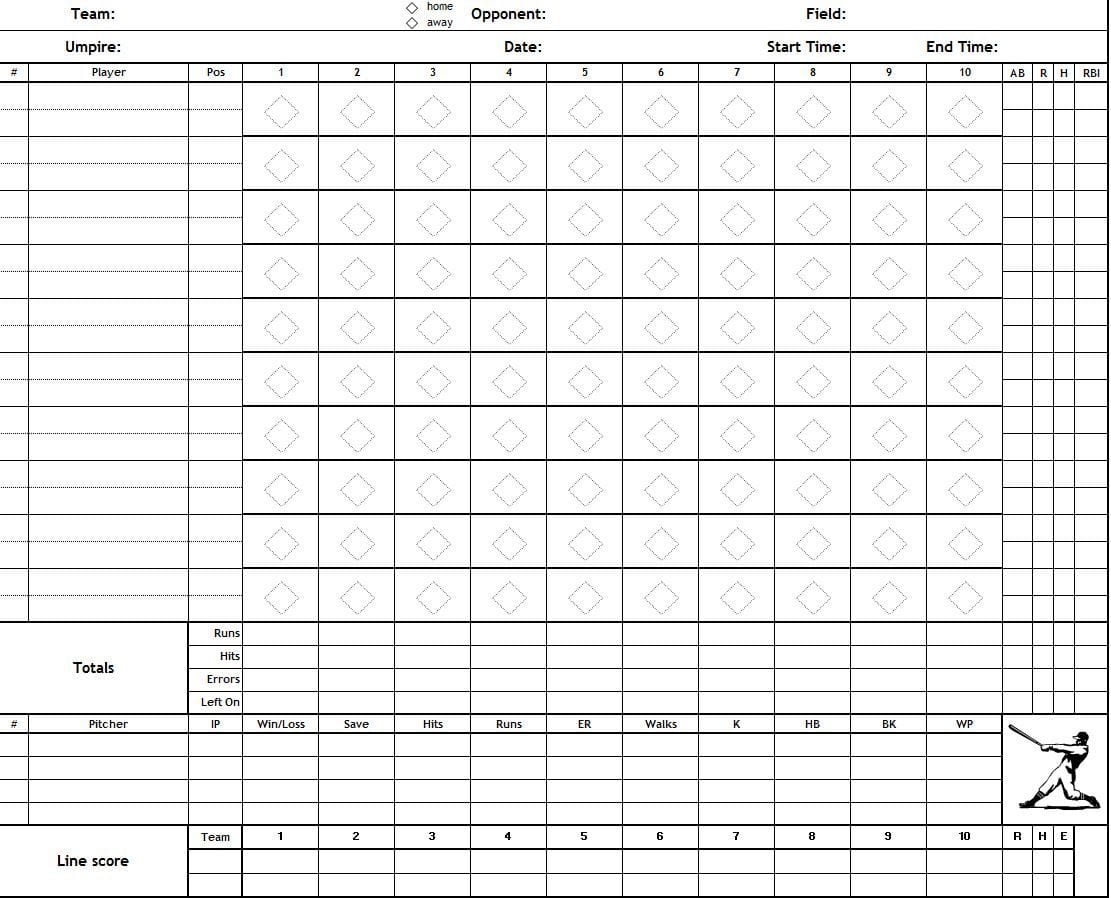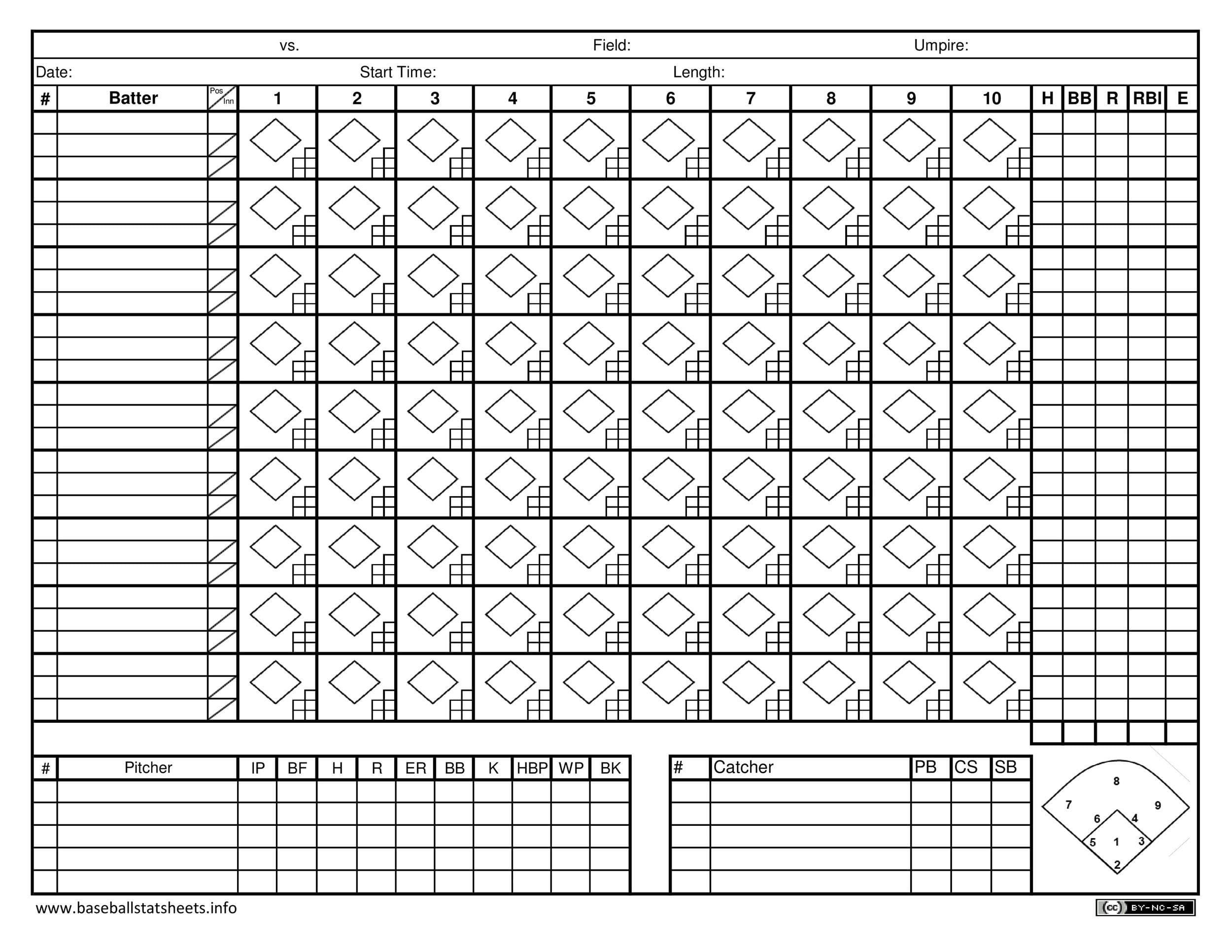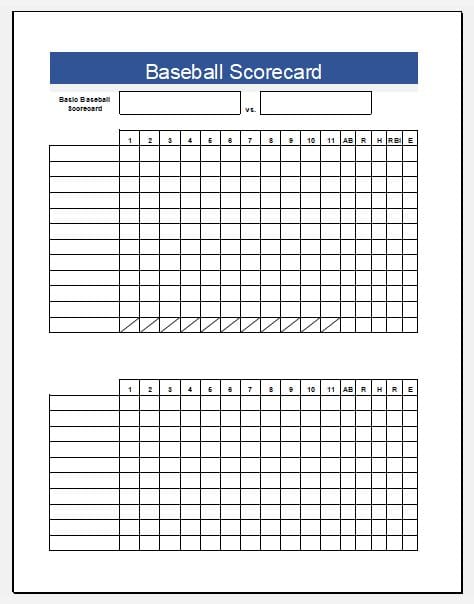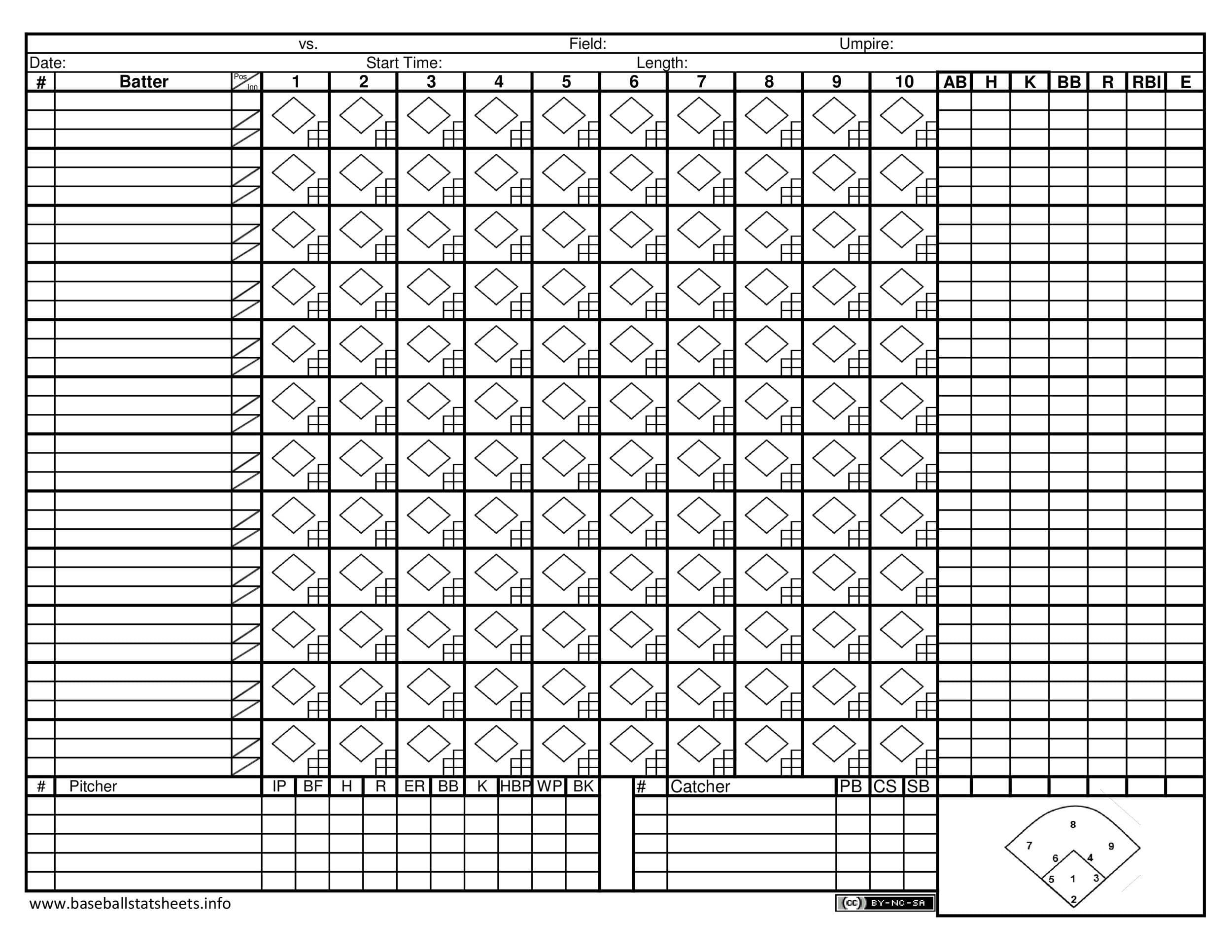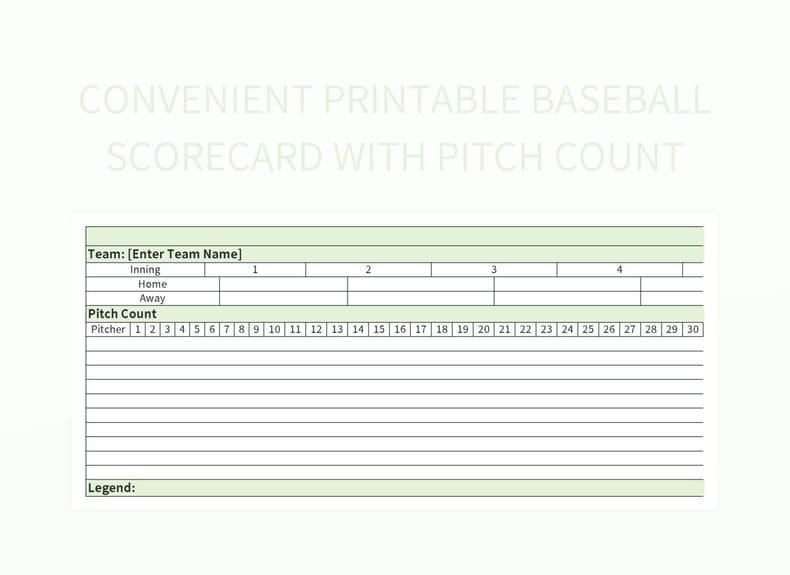
Baseball scorekeeping is an art that requires attention to detail, a solid understanding of the game, and a bit of creativity. For enthusiasts and professionals alike, having a reliable and comprehensive scorecard with pitch count is essential for tracking the intricacies of each game. In this article, we'll delve into the world of baseball scorekeeping, explore the benefits of using a scorecard with pitch count, and provide you with a customizable template to enhance your baseball experience.
Why Use a Baseball Scorecard with Pitch Count?
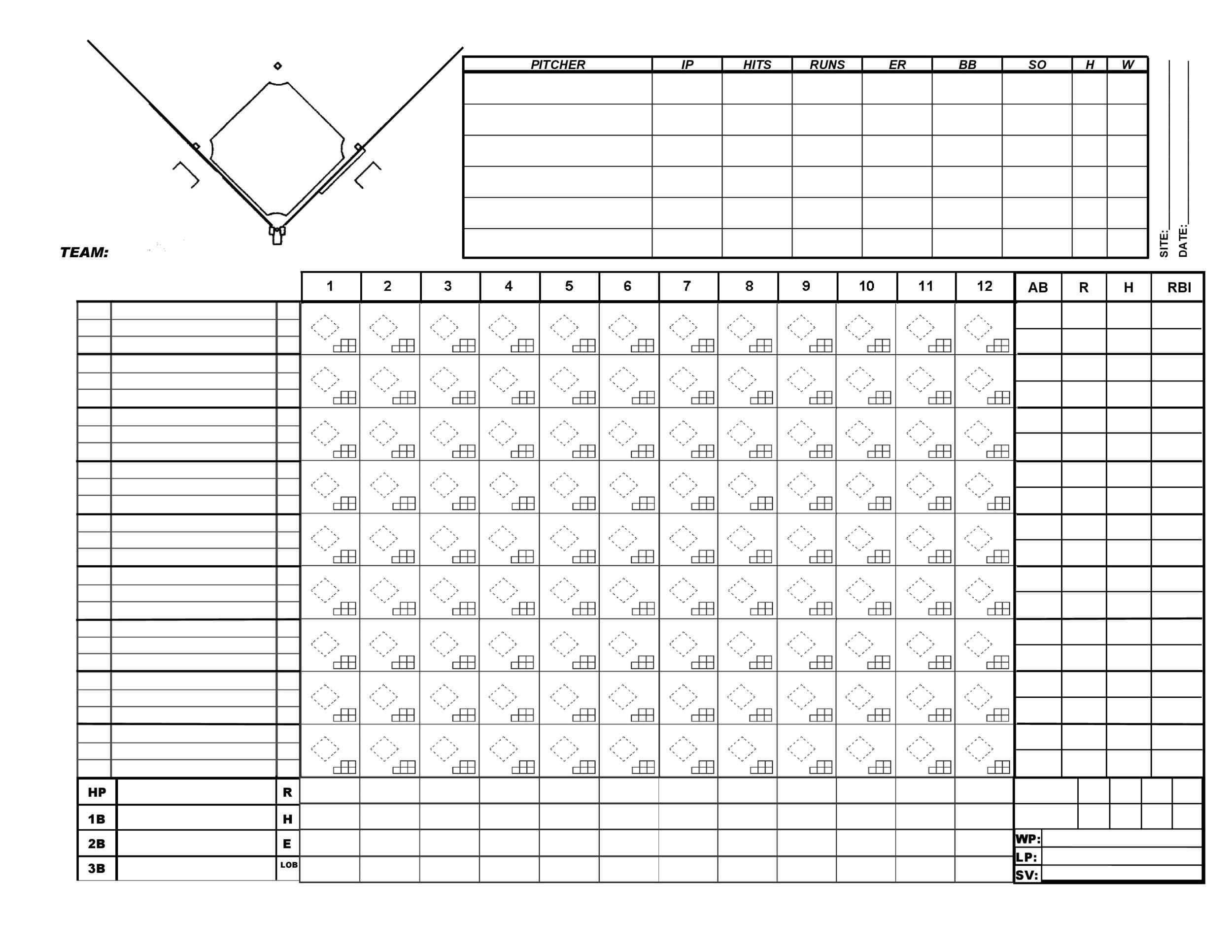
A baseball scorecard with pitch count serves as a valuable tool for fans, coaches, and players. By tracking pitches, you gain insight into the game's rhythm, the strategies employed by each team, and the performance of individual players. This information can be instrumental in making informed decisions during the game, whether you're a coach adjusting your lineup or a fan trying to predict the outcome.
Using a scorecard with pitch count also helps to:
Analyze a pitcher's performance, including their pitch count, strikeout rate, and effectiveness against different types of batters Identify trends in the opposing team's strategy, such as their pitch selection and defensive alignments Enhance your understanding of the game, allowing you to appreciate the nuances of baseball and engage more deeply with the action on the field
Understanding the Basics of Baseball Scorekeeping
Before we dive into the specifics of using a scorecard with pitch count, it's essential to understand the fundamentals of baseball scorekeeping. A standard scorecard typically includes the following information:
The teams playing, including their abbreviations and logos The date and location of the game The starting lineups for each team, including the player's name, position, and uniform number A grid or table to track the game's progression, including columns for: + Innings + Runs + Hits + Errors + Pitch counts + Strikeouts + Walks
The Importance of Pitch Count in Baseball Scorekeeping
Pitch count is a critical aspect of baseball scorekeeping, as it provides insight into a pitcher's workload and potential fatigue. By tracking pitch count, you can:
Monitor a pitcher's performance and adjust your strategy accordingly Identify potential pitcher fatigue, which can impact their effectiveness and increase the risk of injury Analyze a pitcher's pitch selection and effectiveness against different types of batters
To effectively track pitch count, you'll need to include the following information on your scorecard:
The number of pitches thrown by each pitcher The type of pitches thrown (e.g., fastball, curveball, changeup) The location of each pitch (e.g., ball, strike, foul ball)
Customizable Baseball Scorecard with Pitch Count Template
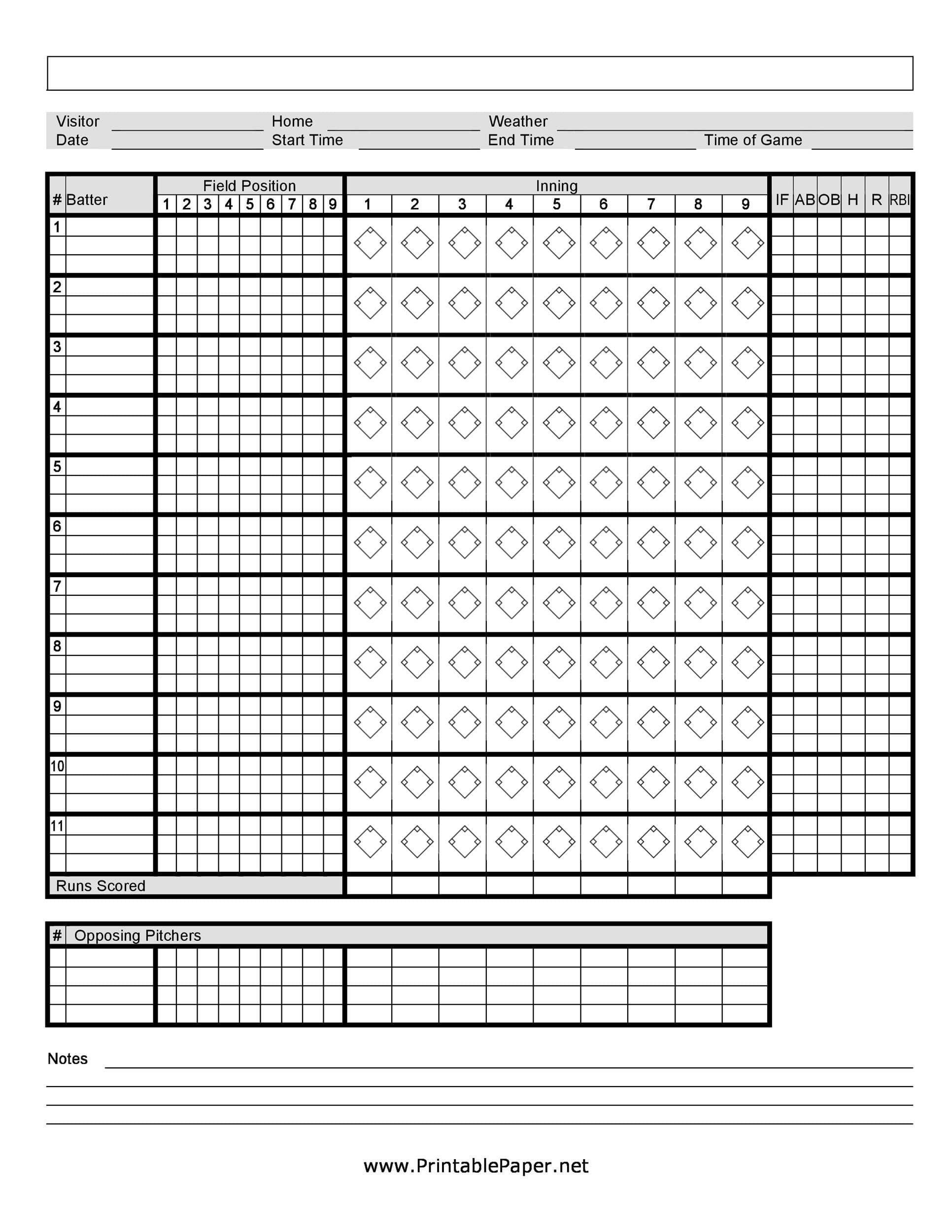
To help you get started with baseball scorekeeping, we've created a customizable template that includes space for tracking pitch count. You can download the template below and modify it to suit your needs.
Baseball Scorecard with Pitch Count Template
[Insert template]
Using the Template
To use the template, simply print out a copy and fill in the information as you watch the game. Be sure to track the following:
The teams playing, including their abbreviations and logos The date and location of the game The starting lineups for each team, including the player's name, position, and uniform number The game's progression, including columns for: + Innings + Runs + Hits + Errors + Pitch counts + Strikeouts + Walks The number of pitches thrown by each pitcher The type of pitches thrown (e.g., fastball, curveball, changeup) The location of each pitch (e.g., ball, strike, foul ball)
Tips for Effective Baseball Scorekeeping
To get the most out of your baseball scorecard with pitch count, follow these tips:
Pay attention to the game's rhythm and adjust your scoring accordingly Use a variety of symbols and abbreviations to track different types of plays Keep your scorecard organized and easy to read Practice, practice, practice – the more you score, the more comfortable you'll become with the process
Common Baseball Scorekeeping Symbols and Abbreviations
To help you get started with baseball scorekeeping, here are some common symbols and abbreviations:
K: Strikeout BB: Walk HR: Home run 1B: Single 2B: Double 3B: Triple SB: Stolen base CS: Caught stealing E: Error
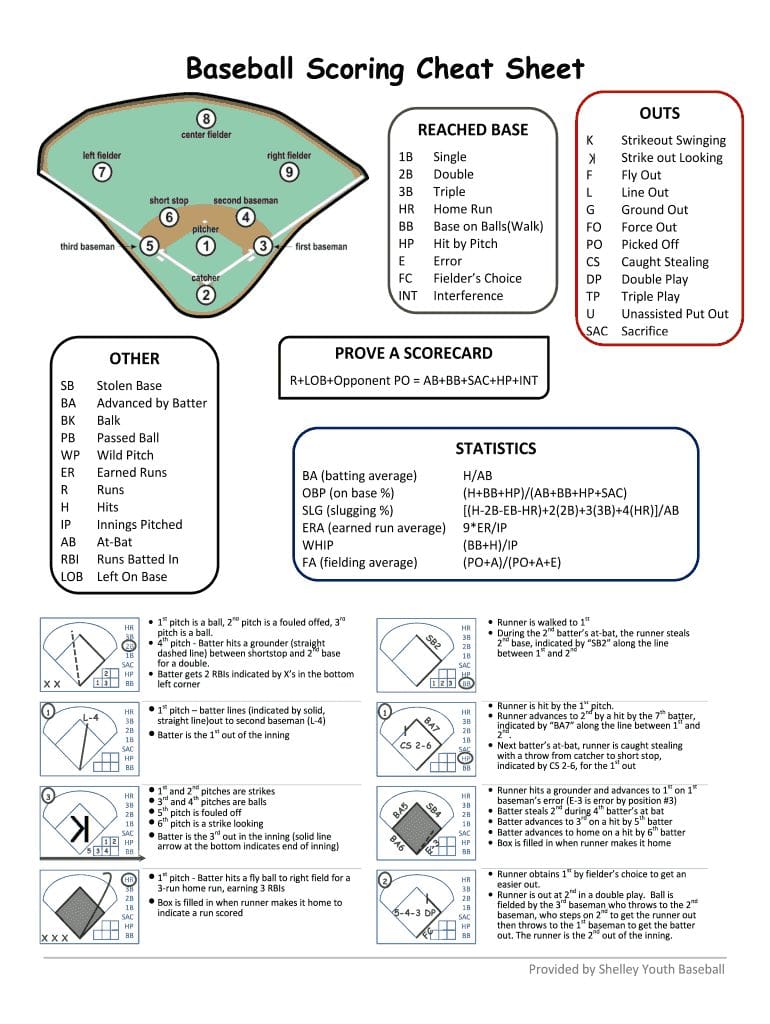
By mastering these symbols and abbreviations, you'll be well on your way to becoming a skilled baseball scorekeeper.
Conclusion
Baseball scorekeeping is an art that requires attention to detail, a solid understanding of the game, and a bit of creativity. By using a scorecard with pitch count, you'll gain insight into the game's rhythm, the strategies employed by each team, and the performance of individual players. Whether you're a fan, coach, or player, our customizable template and tips for effective baseball scorekeeping will help you enhance your baseball experience.
We hope you've enjoyed this article and found the information helpful. Do you have any questions or tips for baseball scorekeeping? Share them with us in the comments below!
FAQs
What is the purpose of a baseball scorecard?
+A baseball scorecard is used to track the game's progression, including the score, hits, errors, and pitch counts.
Why is pitch count important in baseball scorekeeping?
+Pitch count is important because it provides insight into a pitcher's workload and potential fatigue, allowing teams to adjust their strategy accordingly.
What are some common baseball scorekeeping symbols and abbreviations?
+Common symbols and abbreviations include K (strikeout), BB (walk), HR (home run), 1B (single), 2B (double), 3B (triple), SB (stolen base), CS (caught stealing), and E (error).
Gallery of Baseball Scorecard With Pitch Count Template
